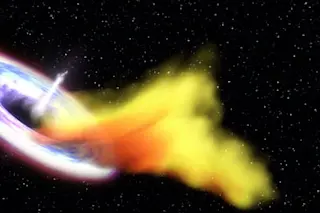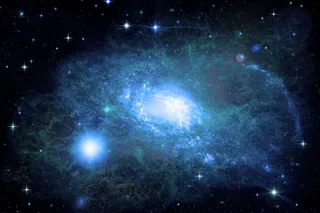Black holes are finally winning some respect. After long regarding them as agents of destruction or dismissing them as mere by-products of galaxies and stars, scientists are recalibrating their thinking. Now it seems that black holes debuted in a constructive role and appeared unexpectedly soon after the Big Bang. “Several years ago, nobody imagined that there were such monsters in the early universe,” says Penn State astrophysicist Yuexing Li. “Now we see that black holes were essential in creating the universe’s modern structure.”
Black holes, tortured regions of space where the pull of gravity is so intense that not even light can escape, did not always have such a high profile. They were once thought to be very rare; in fact, Albert Einstein did not believe they existed at all. Over the past several decades, though, astronomers have realized that black holes are not so unusual after all: Supermassive ones, ...















